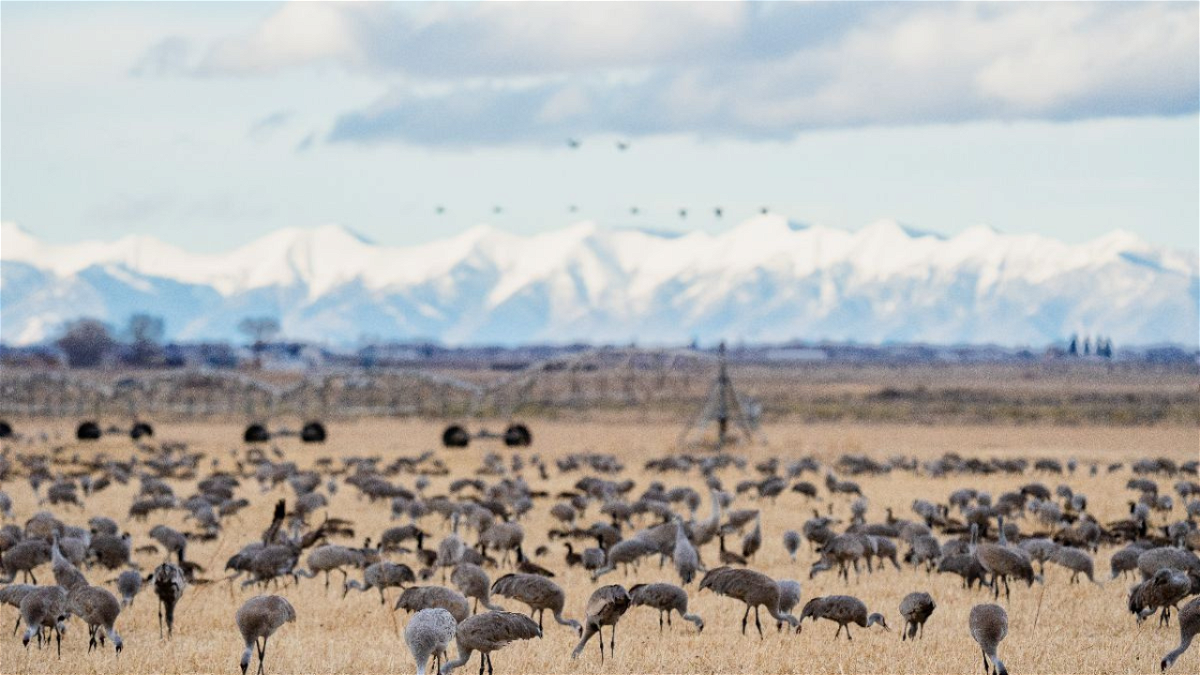March brings thousands of migrating sandhill cranes through Colorado

MONTE VISTA, Colo. (KRDO) -- According to Colorado Parks and Wildlife, more than 20,000 greater sandhill cranes are in the midst of their annual Spring migration and are stopping in Southern Colorado's San Luis Valley. They are making the transition from their Winter habitat to breeding grounds in the North.
Colorado Parks and Wildlife staff and volunteers will be on-hand at scoping sites and have a booth at the Ski Hi Complex during the 41st Monte Vista Crane Festival, to be held March 8-10, 2024.
"This is one of the great migrations in the country that people can actually get out and see. The Monte Vista Crane Festival is an exciting event that CPW and our wonderful volunteers take pride in being a part of, and we love this chance to reunite with some volunteers who have assisted with this for decades.”
Catherine Dolder | CPW Southwest Region Education and Volunteer Coordinator
CPW will also have a presence at the 24th Eckert Crane Days Festival to be held March 22-24 in Delta County.
As part of the festivities, CPW wildlife biologist Evan Phillips will give a presentation titled "Taking a Closer Look at Sandhill Cranes." The event will be held at 6 p.m. March 22 at the Grand Mesa Arts & Events Center in Cedaredge. Phillips has been involved in research studies to better understand changing migratory patterns of sandhill cranes in the Rocky Mountains.
“We look forward to this opportunity to be part of the Eckert Crane Days Festival and interact with interested members of the community who now see more sandhill cranes in this area of the state more frequently. We’ve seen more cranes wintering here rather than traveling further south, and we’ve been working along with the U.S. Fish and Wildlife Service to study that pattern change.”
Evan Phillips | CPW Wildlife Biologist
Those interested in the presentation are asked to RSVP on the Grand Mesa Arts & Events Center webpage.
The gathering place to observe sandhill cranes during March 23-24 of Eckert Crane Days is Fruitgrowers Reservoir. Experienced birders will be on hand with scopes and binoculars to help visitors identify the birds and their behaviors.
Cranes are migratory birds, and the Rocky Mountain population of greater sandhill cranes is estimated at roughly 20,000. Much of the population spends its winter in nesting grounds south in New Mexico, Arizona and Mexico and will migrate north in the spring to summer breeding grounds in Idaho, Montana and Wyoming.
Cranes are among the oldest living species on the planet, with fossil records dating back 9 million years. The birds that migrate through Colorado are the largest of the North American sandhill crane subspecies standing 4-feet tall with a wing-span of up to 7 feet and weighing in at 11 pounds. Besides their imposing size, the birds issue a continuous and distinctive call.
The Monte Vista National Wildlife Refuge sees thousands of sandhill cranes each day during this time of year. The Monte Vista National Wildlife Refuge will be open one hour before sunrise and one hour after sunrise for crane viewing. Cranes may also be viewed at the Alamosa National Wildlife Refuge southeast of Alamosa as well as at CPW’s Rio Grande, Higel and Russell Lakes State Wildlife Areas. CPW asks the public to please observe the seasonal closures at the State Wildlife Areas.
Cranes are most active at dusk and dawn when they move from nighttime roosting areas to fields where they feed. People attending the Monte Vista Crane Festival’s viewing sites may also see eagles, owls, turkeys and a variety of other raptors and waterfowl.
Birdwatchers should be cautious when parking, getting out of vehicles and walking along roads. View birds from a distance with binoculars and spotting scopes, and observe trail signs and closure notices.




